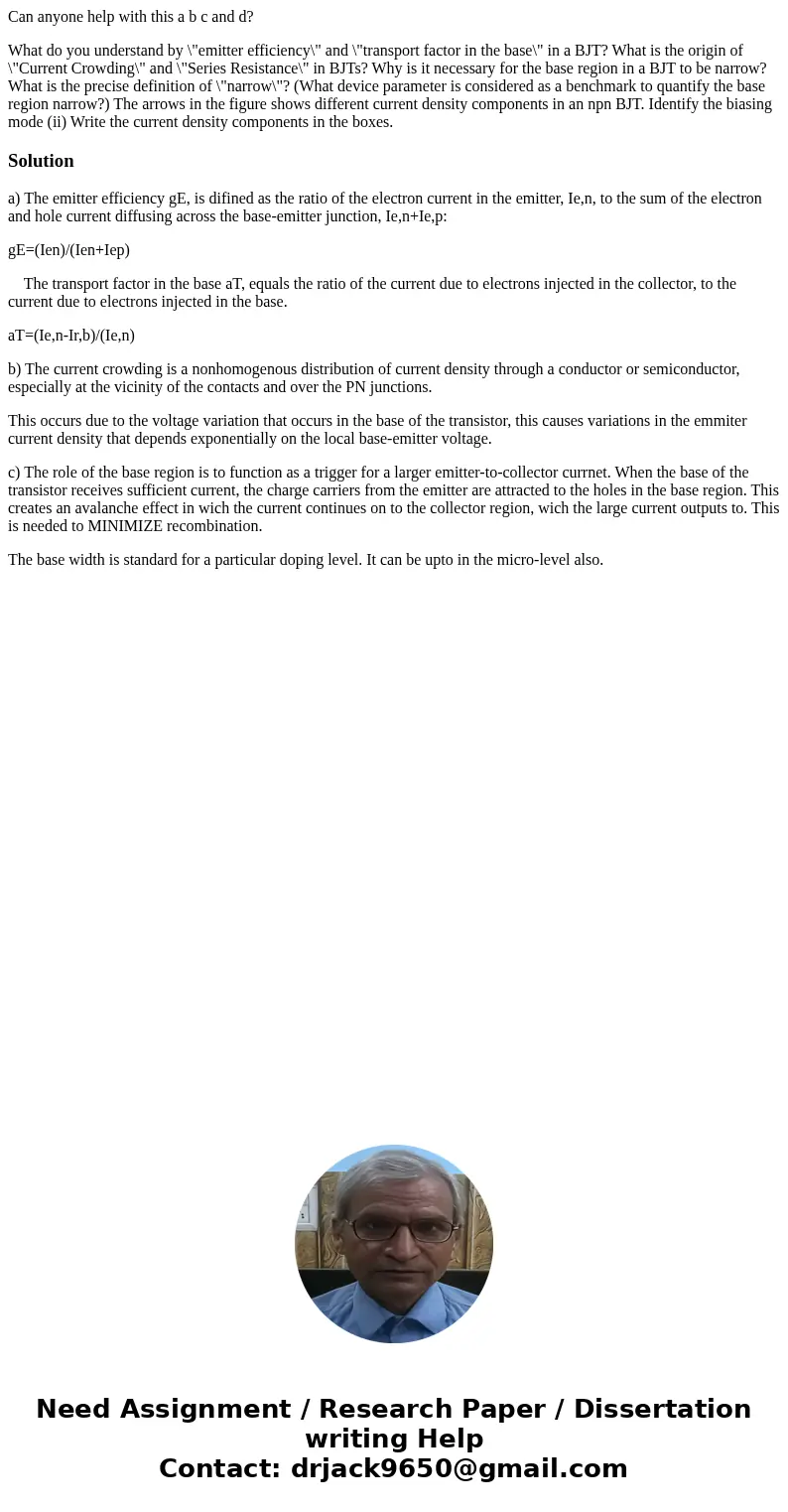Can anyone help with this a b c and d What do you understand
Can anyone help with this a b c and d?
What do you understand by \"emitter efficiency\" and \"transport factor in the base\" in a BJT? What is the origin of \"Current Crowding\" and \"Series Resistance\" in BJTs? Why is it necessary for the base region in a BJT to be narrow? What is the precise definition of \"narrow\"? (What device parameter is considered as a benchmark to quantify the base region narrow?) The arrows in the figure shows different current density components in an npn BJT. Identify the biasing mode (ii) Write the current density components in the boxes.Solution
a) The emitter efficiency gE, is difined as the ratio of the electron current in the emitter, Ie,n, to the sum of the electron and hole current diffusing across the base-emitter junction, Ie,n+Ie,p:
gE=(Ien)/(Ien+Iep)
The transport factor in the base aT, equals the ratio of the current due to electrons injected in the collector, to the current due to electrons injected in the base.
aT=(Ie,n-Ir,b)/(Ie,n)
b) The current crowding is a nonhomogenous distribution of current density through a conductor or semiconductor, especially at the vicinity of the contacts and over the PN junctions.
This occurs due to the voltage variation that occurs in the base of the transistor, this causes variations in the emmiter current density that depends exponentially on the local base-emitter voltage.
c) The role of the base region is to function as a trigger for a larger emitter-to-collector currnet. When the base of the transistor receives sufficient current, the charge carriers from the emitter are attracted to the holes in the base region. This creates an avalanche effect in wich the current continues on to the collector region, wich the large current outputs to. This is needed to MINIMIZE recombination.
The base width is standard for a particular doping level. It can be upto in the micro-level also.

 Homework Sourse
Homework Sourse